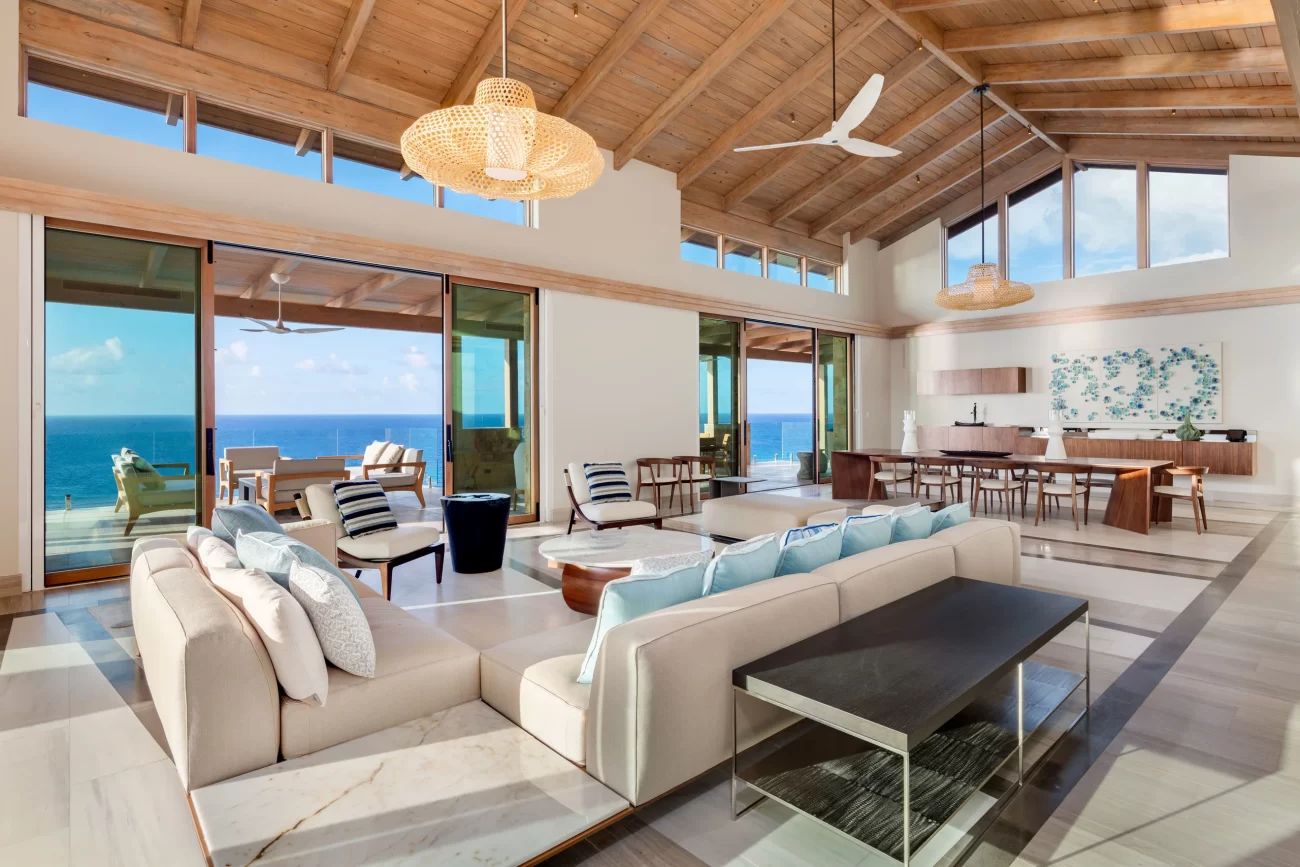Biophilic Design Is the Ultimate Holistic Approach to Home Wellness
OBMI Shares with Mansion Global Nature-Inspired Details Can Improve Physical, Mental and Emotional Well-being
By Tracy Kaler
Originally Published April 21, 2023

Villa Maronti – Architecture by OBMI
Since people have an intrinsic desire to be outdoors to reap the benefits of nature, it’s no surprise that biophilic design continues to gain ground as an aesthetic with human wellness at its core.
The theory––which has evolved into a movement––might be in the spotlight these days, but it isn’t a fad. On the contrary, biophilic design has been around for decades. In 1973, German-born American Erich Fromm detailed biophilia as “the passionate love of life and of all that is alive.” And biologist and Harvard research professor E.O. Wilson’s 1984 book, “Biophilia,” states that humans are attracted to nature and need to feel connected to it.
Ana Ramirez, senior lead designer at OBMI, a design firm with locations across the globe, defines biophilic design as “the practice of connecting people and nature in buildings, fulfilling human’s innate need to be in touch with the environment.”
Infusing sunlight, greenery and fresh air into spaces can provide comfort, reduce stress and even promote healing, scientific studies have found. Likewise, encouraging a mindful lifestyle can have a profound impact on one’s health and happiness. “Incorporating wellness into design creates environments that promote physical, mental and emotional well-being by slowing down the pace of daily life,” Ms. Ramirez said.
Inspired by Nature
Houseplants, albeit with proper light and watering, are a straightforward solution for incorporating nature into most any place in the home. A leafy collection––perhaps a medley of tropical flowers like bromeliads and orchids mixed with peace lilies, philodendrons and Boston ferns––can transform a lifeless room and even improve air quality. But plants and flowers, though vital to biophilic design, account for only one application.

The Cliffs – Architecture by OBMI
Let There Be Light
Natural light changes by the minute, hour, day and season. In a sun-drenched room, one can feel immersed in nature, as if the lines blur between the outside and inside, but then feel differently as the sun ducks behind the clouds.
“Natural sunlight increases serotonin levels, reduces blood pressure, increases sleep quality and has various other benefits,” Ms. Ramirez said. For a British Virgin Islands estate, the designer and her team curated the layout with windows and sliding-glass doors allowing natural light to saturate the space. In turn, access to the outdoors and sweeping ocean views establish an intimate connection with the earth.
Natural Colors and Materials Reign Supreme
Nature-influenced colors consist of more than earthy tans, reds and browns. According to Ms. Ramirez, green can signify growth, renewal and vitality, and blue is a calming color derived from water and the sky. “Colors serve as triggers in our minds, influencing how we perceive the world and regulating our moods and emotions,” she said. “Nature’s color palette instinctively fosters a greater sense of alignment and connectedness to ourselves, the environment and our loved ones.”
From multicolored sunsets to statuesque palms and century-old oaks, look to the setting for inspiration.

Garden Villa at Taj Goa – Interior Design by UCO Studio by OBMI
Appeal to All the Senses
Sound, a sense many of us take for granted, can be the difference between a peaceful and stressful home. Leaves rustling as the wind stirs, birds chirping outside an open window and waves crashing against a bluff are all pleasing to the ear. “By designing seamless living spaces between interiors and exteriors, one can experience the sounds of the natural environment,” Ms. Ramirez said.
Nature’s soundtrack, a water view and a whiff of lavender work in unison to create a serene setting, but these natural elements provide not-so-obvious benefits as well.






